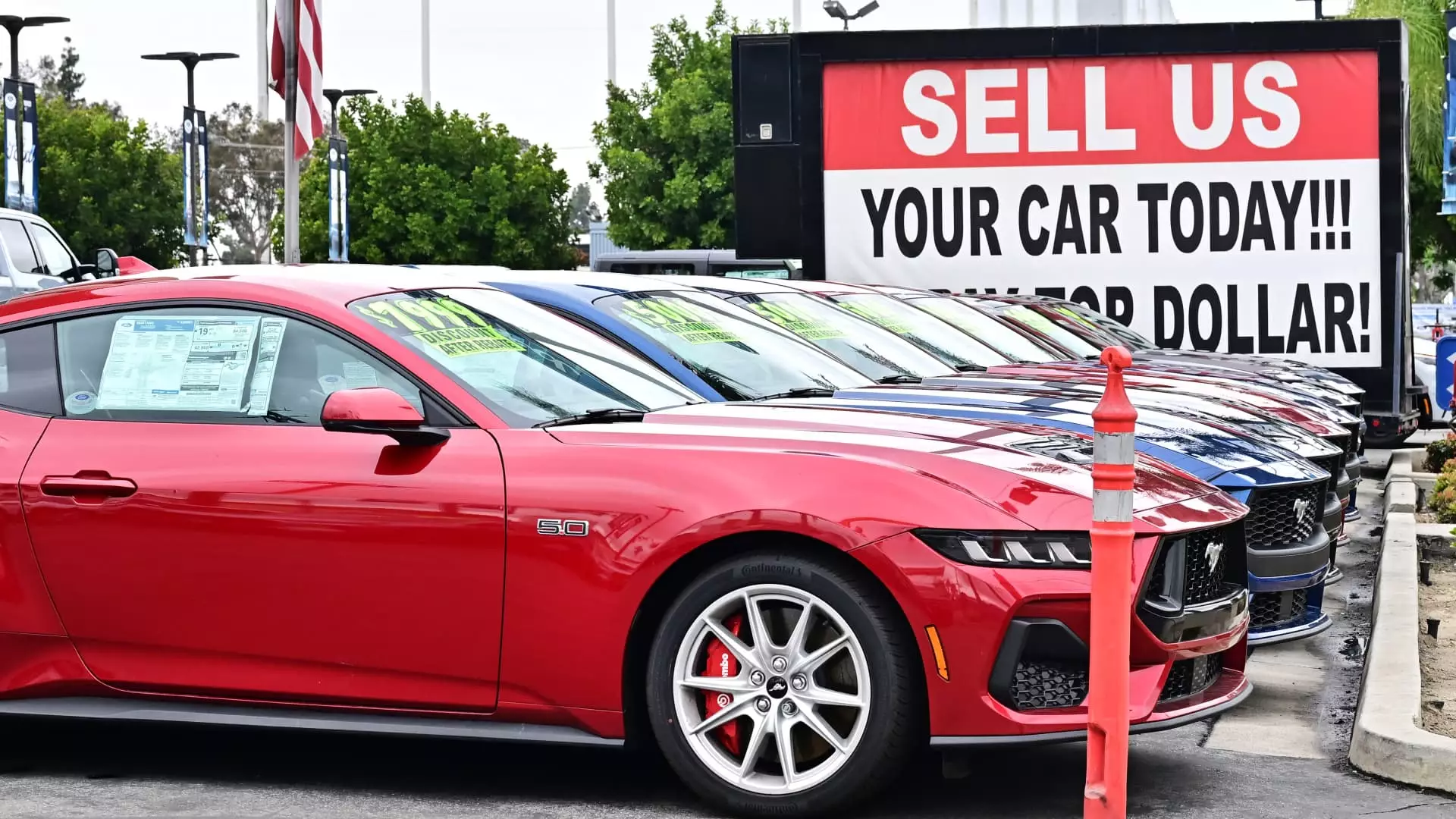The used vehicle market has recently experienced a dramatic rollercoaster of price fluctuations, exposing the vulnerability of both consumers and the industry. Data from Cox Automotive reveals a noteworthy yet concerning trend: prices dipped by 1.5% from April to May, though they still stand 4% higher than the same time last year. These statistics reflect a climate of uncertainty that has left car buyers with mixed feelings—an unfortunate scenario for those who desperately need reliable transportation while managing tight budgets.
The Tariff Tango: How Politics Shape Prices
One cannot overlook the influence of policy changes, particularly President Trump’s substantial tariffs on newly imported vehicles and essential parts, which, although they do not directly affect used car sales, create ripples that touch every corner of the automotive industry. The used car market typically serves as a fallback for consumers who find new vehicle prices inflated due to tariffs. This political maneuvering has left buyers trapped in a conundrum—opting for used vehicles that carry their own inflated prices as a result of rising new car valuations. The intricate dance of tariffs may bolster the short-term market for used cars, but the long-term ramifications could stratify access to affordable, reliable transportation for ordinary Americans.
A Fragile Market: Demand vs. Supply
Despite a slight pullback in sales volume—down 3% from April but showing an uptick of 4% from the previous year—demand for used vehicles remains surprisingly robust. Inventory levels hovering around 2.2 million units signify a strained marketplace, where consumers cling to aging vehicles longer amid lower production rates caused by the persistent pandemic and ongoing global supply chain disentanglements. This significant deficit creates a competitive arena where prices are likely to remain high, leaving average Americans scrambling for affordable options.
The Long Shadow of Economic Distress
The broader economic environment casts a long and unsettling shadow on the used vehicle market. The reality of surging prices paired with stagnant potential consumer wages threatens to sink those on the financial margins further into desperation. The relationship between wholesale and retail pricing hasn’t behaved as expected, causing confusion and discontent among consumers dependent on the used market for their mobility needs. This trend underscores a vital reality: the automotive industry is increasingly becoming a privilege rather than a necessity for many.
The Path Forward: Stability or Volatility?
As we look towards the future, lingering questions prevail concerning stabilization in the used vehicle market. While some analysts observe a calming trend, the volatility and uncertainty connected to external economic factors remain palpable. Without systemic change to alleviate the pressures caused by tariffs and supply woes, consumers may be left in a precarious position, forced to reconsider their expectations about ownership and mobility altogether. As politicians shape policies that impact consumer behavior, the automotive market reflects the larger issues of equity and accessibility in today’s economy—a troubling reality that cannot be ignored.

